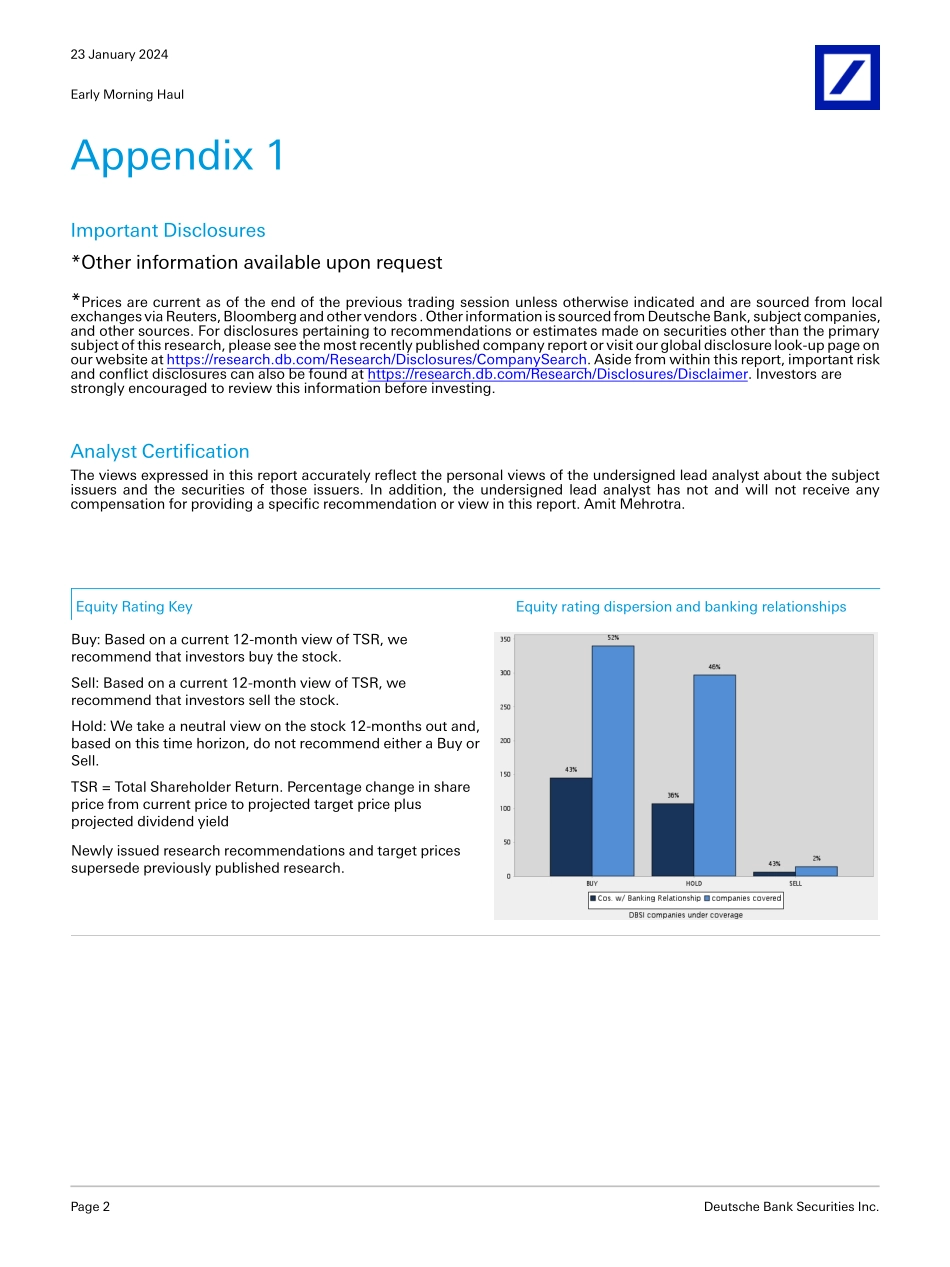23 January 2024Deutsche BankResearch North America Canada United States Industrials Air Freight & Logistics Industry Early Morning Haul Date Industry Update Weather dominated last week (Rail + Truck); +DieselRail carloads - The Class 1 Rails reported last week's volumes yesterday. The numbers were pretty bad, reflecting the inclement weather across much of the country. We usually don't place much emphasis on weekly comps during the first several weeks of the year due to weather disruptions, but last week was particularly difficult. We note, compared with the sequential move into the third week of last year (which also included MLK Day on Monday), UNP was -11% vs. -2%; CSX -17% vs. -2%; NSC -13% vs. flat; CNI -16% vs. -3%, and; CP -15% vs. -4%. It'll be interesting to see how the weaker start to the year is reflected in the tone of management teams as they discuss 2024 outlooks in upcoming earnings this week. CNI kicks things off for the Rails after the close today - the company's volumes are down 12% and 10% year to date on an RTM and carload basis, respectively, vs. consensus of flat RTMs; and there is widely held expectations the company will guide to double-digit EPS growth for this year (consensus +11% vs DBe +8%).Truck rates - The winter weather pushed truck rates up last week, driven by less supply due to the inclement weather (i.e., more drivers stayed home). The national tender rejection rate, as reported by Freightwaves, was over 5% last week, which was only the third time it has done that since Oct. 22 (for context, it was 25% at the peak of freight flows during the pandemic). The dry van spot rate reported by FTR Truckstop yesterday was up 3% sequentially last week vs. -5% for the average of the last five years. DAT reported yesterday that truckload contract rates were up 0.2% last week, their fourth consecutive weekly move upwards, though we would characterize it as more of bouncing along the bottom. The dry van market demand index--a ratio of loads to trucks--was up 7% sequentially last week vs. -18% for the average of the same third week over the last five years. Modestly declining capacity over the last several months may have driven a small part of the uptick in rates, but much, much more is needed to say we're in an improving market.Diesel - National diesel prices averaged $3.84 last week, down 3c, according to the EIA yesterday. We still consider it to be at elevated levels, though it's down a lot from the recent peak. Elevated fuel prices continue to be positive for LTLs, which have fuel surcharges based on a percent over a base rate. And due to a mostly two-month lag in Rails' fuel surcharges, the decrease in the price of diesel will continue to be a tailwind for them into 1Q24.Amit MehrotraResearch Analyst+1-212-250-2076Ben MohrResearch Analyst+1-212-250-1708Chris RobertsonRes...


